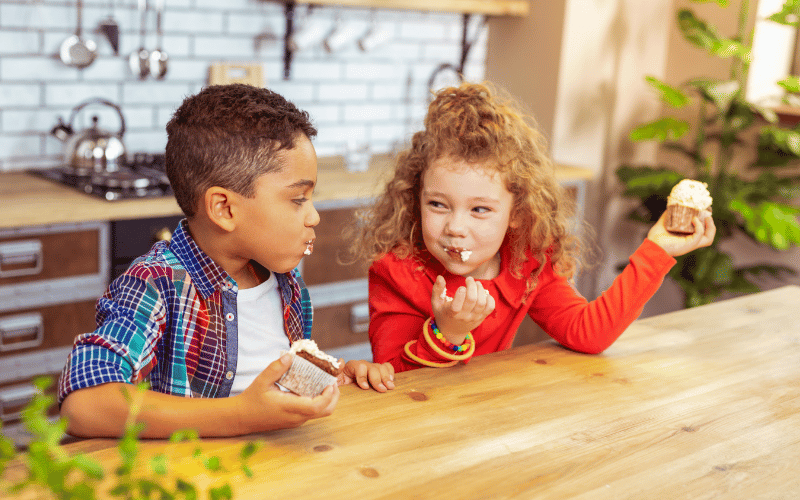In today’s fast-paced world, it’s more important than ever to instill gratitude and positivity in our children. Cultivating a sense of thankfulness and optimism can help children develop resilience, improve their mental health, and ultimately lead to happier and more fulfilled lives. In this article, we will explore the importance of gratitude and positivity in kids, discuss various strategies to foster these qualities, and share practical tips for making gratitude a natural part of your child’s everyday life. Let’s dive in and learn how to grow gratitude in our little ones!

Why Gratitude and Positivity Matter
The Power of Gratitude in Childhood Development
Gratitude is more than just saying “thank you.” It’s a mindset that encourages appreciation for the good things in life, both big and small. Research shows that children who practice gratitude are more likely to have better emotional well-being, stronger social connections, and enhanced academic performance. By fostering gratitude in our children, we can help them develop a positive outlook on life and equip them with the tools they need to navigate challenges and setbacks with resilience.
The Role of Positivity in Kids’ Lives
Positivity goes hand in hand with gratitude. A positive attitude enables children to see the good in themselves, others, and the world around them. Studies have found that kids who maintain a positive outlook are more likely to be healthier, achieve more in school, and exhibit better social skills. By nurturing positivity in our children, we are setting them up for success in every aspect of their lives.
Strategies for Cultivating Gratitude and Positivity
Modeling Gratitude and Positivity
One of the most effective ways to teach children gratitude and positivity is to model these behaviors ourselves. When parents and caregivers consistently demonstrate thankfulness and maintain a positive attitude, children are more likely to adopt these qualities as well. Make a conscious effort to express gratitude daily and cultivate a positive outlook on life, even in challenging situations.
Creating a Gratitude Routine
Establishing a daily or weekly gratitude routine can help children develop the habit of expressing thankfulness. Some popular practices include keeping a gratitude journal, sharing daily gratitude moments at the dinner table, or creating a gratitude jar filled with notes about things they are grateful for. Choose a routine that works best for your family and watch as your child’s gratitude muscle grows stronger over time.
Encouraging Empathy and Perspective
Helping children develop empathy and understand different perspectives can also foster gratitude and positivity. Encourage your child to consider how others might feel in various situations and discuss the challenges that other people may face. This will help them appreciate the good things in their own lives and feel more connected to others.
Celebrating Small Victories
Sometimes it’s easy to overlook the small wins in life. Make an effort to recognize and celebrate your child’s achievements, no matter how minor they may seem. This will help them develop a positive self-image and reinforce the idea that hard work and perseverance pay off.
Frequently Asked Questions
How can I help my child maintain gratitude and positivity during difficult times?
During challenging periods, it’s important to remind your child that it’s okay to feel a range of emotions, but they can still find something to be grateful for. Encourage open communication and help them identify the silver linings in difficult situations.
What age is appropriate to start teaching gratitude and positivity?
It’s never too early to start fostering gratitude and positivity in children. Even toddlers can begin to learn these concepts through simple activities and routines. As your child grows older, continue to adapt and expand on these lessons.
How can I ensure that gratitude and positivity become a long-term habit for my child?
Consistency is key in aintain regular routines and practices that focus on gratitude and positivity, and make them an integral part of your family’s daily life. As your child grows, adapt these routines to match their changing needs and interests.
Can gratitude and positivity help with my child’s academic performance?
Yes, studies have shown that children who practice gratitude and maintain a positive attitude tend to perform better academically. These qualities can help improve focus, boost motivation, and foster a growth mindset, which contributes to academic success.
What are some age-appropriate activities to help my child practice gratitude and positivity?
For young children, simple activities like drawing pictures of things they are grateful for, saying thank you, and engaging in acts of kindness can help instill gratitude and positivity. For older kids, maintaining a gratitude journal, volunteering, and participating in mindfulness exercises can be effective ways to practice these qualities.
Conclusion: Growing Gratitude and Positivity for a Brighter Future
Fostering gratitude and positivity in children is a powerful way to set them up for a lifetime of happiness, success, and resilience. By understanding the importance of these qualities, implementing effective strategies, and consistently practicing gratitude and positivity as a family, we can help our children develop an appreciation for life’s gifts and a positive outlook that will serve them well throughout their lives. Invest in your child’s future by growing gratitude and fostering thankfulness and positivity today.